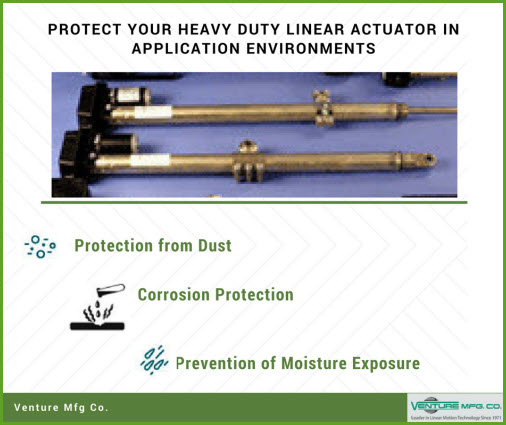The application environment is one of the biggest factors to consider when choosing a heavy duty linear actuator. In most environments, there will be certain contaminants present that can harm the actuator. For this reason, it is important that the actuator be designed to ensure protection from contamination.
Heavy Duty Linear Actuator Contamination Prevention Solutions
Certain features or components can be used to ensure contamination prevention in heavy duty linear actuators.
- Protection from Dust: Dust is a common problem faced in most manufacturing facilities. It can be light or heavy in weight, but continued exposure to either type can lead to hindrance in actuator performance. Custom gaskets and protective bands can be designed to ensure that the exposure to dust is minimal.
- Prevention of Moisture Exposure: The actuator can be designed with 316 stainless steel. This is the material used in most moisture filled environments, such as food processing plants. Type 316 SS is known for its immense strength and pitting resistance at elevated temperatures. Stainless steel casings can also be designed to protect the actuator’s critical working components from any kind of contamination.
- Corrosion Protection: If any environment consists of moisture, sooner or later, there is bound to be corrosion. This is perhaps the most dangerous contaminant, which can seriously hinder the actuator’s function. Stainless steel fasteners and components can be used for the actuator construction. The motor can also be enclosed in a housing for further protection.
Learn more on this topic in our related blog: Why Should You Invest in Custom Design Industrial Heavy Duty Linear Actuators?
The solutions mentioned above are a few examples of how heavy duty linear actuators can be protected from contamination in industrial environments. Discuss with the actuator manufacturer about the various contaminants, which the actuator will be exposed to. Accordingly, the manufacturer can utilize such and similar solutions to ensure continuous and performance driven actuator operation.

